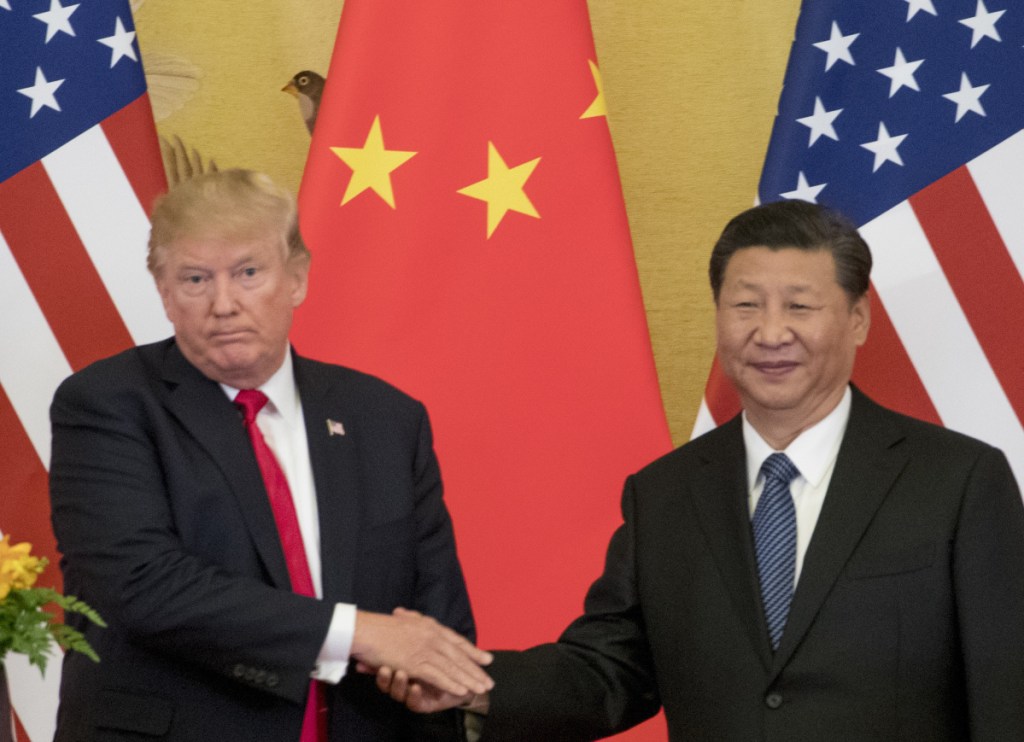Ostensibly imposed to rectify a trade imbalance and lax intellectual property protection, the American tariffs on Chinese goods serve a larger agenda of slowing down the only country in the world that might threaten the supremacy of the United States.
The trade deficit and the protection of intellectual property are longstanding problems that lend themselves to a negotiated settlement. Both are really short-term problems — the deficit will narrow considerably as China’s middle class expands, and intellectual property protection is already improving as China increases its own innovations.
The size of the trade deficit, at $375 billion last year, somewhat distorts the economic relationship between the world’s two largest economies by ignoring the $38.4 billion U.S. surplus for services as well as the beneficiaries of China’s surplus in today’s multination supply chain.
The Apple iPhone, for instance, assembled in and imported from China, is manufactured with components from different countries, with the vast majority of benefit accruing to Apple and only a fraction going to any entity in China. Apple imports from China alone account for a sizable portion of the trade deficit.
The political posturing around trade obscures the mutual benefits that the United States and China enjoy as trading partners. American consumers have obtained quality products at a low cost, which has put money into their pockets, and China’s purchase of more than a trillion dollars of U.S. debt has held inflation in check. If China suddenly sold those Treasury bonds, it would likely push the U.S. economy into recession.
U.S. businesses, including Maine’s lobster industry, have also profited mightily from access to China’s market. General Motors sold more cars and trucks in China than in the United States for each of the last seven years and projects selling 5 million cars a year there by 2020. Boeing sold more than 200 planes to China in 2017 and projects receiving more than a trillion dollars in revenue from China over the next 20 years.
The Chinese are seeking intellectual property protection for their own innovations, which ought to strengthen intellectual property protection for foreign companies as well. Last year, China filed for 48,882 international patents, second only to the United States, and paid nearly $30 billion to use foreign intellectual property, a sign of its growing interest in protecting intellectual property.
The heart of the clash between the United States and China stems from China’s strategic shift from the world’s leading low-cost manufacturer to an innovator of high value-added products. The blueprint for this strategy, laid out in “Made in China 2025,” aspires for China to dominate future-oriented fields such as robotics, aerospace, self-driving cars and other high-tech industries in direct competition with United States.
China’s policy of giving preference to Chinese companies and joint ventures, providing state subsidies for domestic firms and seeking technology transfers from Western partners imitates the strategy employed by Japan, Korea and other developing countries to catch up to industrialized nations. Whether China ought to be considered a developing country lies at the source of the trade dispute.
China’s size and the scope of its strategy, including its Belt and Road initiative to open trade routes with much of Asia, Europe and Africa, presents a classic case of a developing country threatening the hegemony of an established power. Harvard professor Graham Allison has studied conflicts between established and rising powers and has found that in 12 of 16 cases going back to Athens and Sparta, these conflicts led to war, even when war undermined vital interests. A trade war between the U.S. and China will harm both countries because of their interdependent economies. It will slow China’s ascent but not stop it.
When Richard Nixon opened China some 40 years ago, the U.S. hoped China would play its game by adopting a market economy and becoming a responsible member of the World Trade Organization. China may be playing the game better than ever imagined.
But with a standard of living far below that of the United States, the Chinese look upon their country as still developing. They do not believe they can compete with the U.S. — a country with wealth, a long history of innovation and the capacity to attract the best and brightest from all over the world.
Whatever the outcome of the trade dispute, China’s rise ought to be seen as a Sputnik moment — a time for the U.S. to redouble its commitment to scientific and technological innovation and to more rigorous education from preschool to post-graduate for its future workforce. It’s an opportunity to rally the country toward a common objective — to be the most educated, the most innovative and most entrepreneurial nation on earth.
Joseph W. McDonnell is a professor of public policy and management at the Edmund S. Muskie School of Public Service at the University of Southern Maine.
Send questions/comments to the editors.



Success. Please wait for the page to reload. If the page does not reload within 5 seconds, please refresh the page.
Enter your email and password to access comments.
Hi, to comment on stories you must . This profile is in addition to your subscription and website login.
Already have a commenting profile? .
Invalid username/password.
Please check your email to confirm and complete your registration.
Only subscribers are eligible to post comments. Please subscribe or login first for digital access. Here’s why.
Use the form below to reset your password. When you've submitted your account email, we will send an email with a reset code.